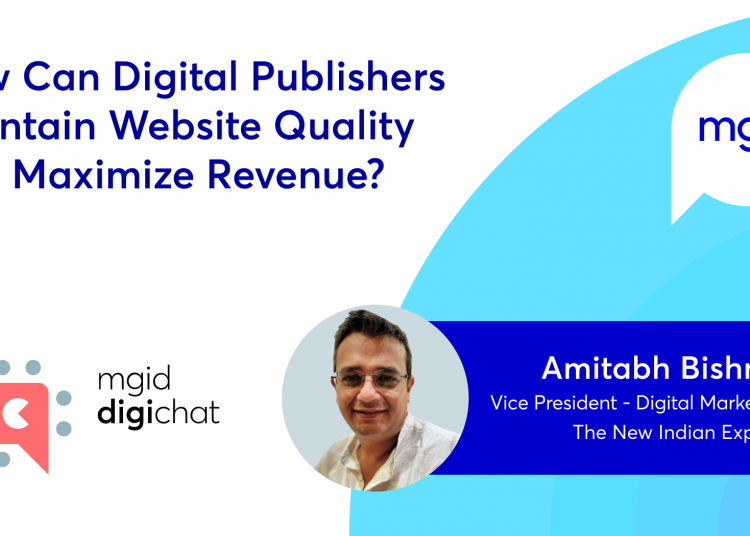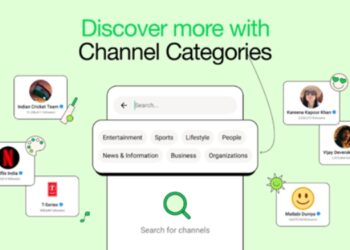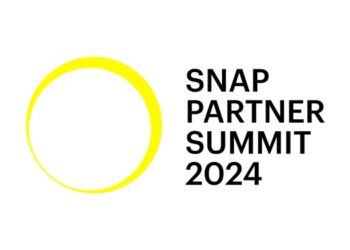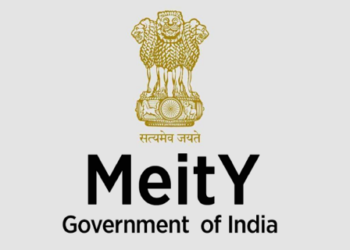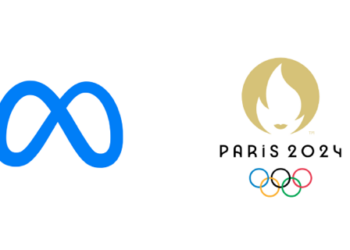The digital ecosystem is constantly evolving and digital publishers, as well as media owners, have probably experienced the most disruption. This has primarily been because of the explosion in the number of digital content creators, digital media channels, and changes in revenue streams. Advertisements and monetizing website traffic are two of the main sources of revenue for digital publishers today. Optimizing the website and working on quality content would be beneficial for attracting new visitors and retaining the existing ones while new content partnerships and amplification can help maximize revenue.
To discuss how publishers can maintain website quality and maximize revenue, Pankaj Sharma, Country Head, MGID India is joined by Amitabh Bishnoi, Vice President– Digital Marketing, The New Indian Express. Here are a few excerpts from their discussion.
Pankaj Sharma: How do you balance audience engagement and advertiser expectations?
Amitabh Bishnoi: Striking the right balance between engaging your audience and meeting the expectations of advertisers is tricky and difficult. Focusing too much on the demands of the advertisers might negatively hamper the user experience on the website and focusing too much on the engagement of the audience might lead to loss of revenue.
Thus, maintaining the right ad-content ratio is extremely important. Further, publishers may even consider the option of native advertising. Native advertising merges the paid content with the look and feel of the publisher’s website and follows the same tone as the editorial content. Users do not find the adsasdisruptive or intrusive. However, it is ethically important for publishers to clearly demarcate paid content as ‘Advertisement’.
Pankaj Sharma: What are the challenges faced by the publisher when it comes to audience engagement?
Amitabh Bishnoi: Publishers in the digital ecosystem face a myriad of challenges prime of them is maintaining a healthy ratio of new and returning users. New and unique content might help facilitate this, but it is not the only way. One challenge is how to ensure that the content on the platform is being personalized for the audience. Tailored content recommendations go a long way in engaging and retaining the audience, but it requires a robust backend as well as understanding the readers’ online profile. Another challenge is identifying the formats that work on the website. Users are always looking at new formats to engage with and for publishers keeping up with this change in preferences is a huge challenge. Another challenge is how to make their content stand out among the milieu of content platforms available online. Establishing a USP for their platform and their content is important if publishers want users to keep coming back and interacting with their website.
Pankaj Sharma: How do ad tech platforms help in revenue as the digital ecosystem evolves continuously? And how has the Indian market been adopting global trends in AdTech?
Amitabh Bishnoi: Advertising Technology, or Ad Tech, is an umbrella term that describes systems of analyzing and managing tools for programmatic advertising campaigns.
For publishers, partnering with an Ad-Tech platform helps optimize their monetization activities through advertising. Publishers open their inventory to advertisers via an ad exchange which is managed by the ad tech platform.
In India, the infusion of technologies such as machine learning, AI, and creative personalization has helped build a strong ecosystem that supports ad tech for publishers. On the publisher’s end, programmatic techniques such as header bidding have helped to improve revenue streams over time. Ad tech platforms in India have been at par with the global trends, whether it is in terms of adoption of technology for a stronger back end or in terms of creating a marketplace for the industry.
Pankaj Sharma: What are the ways for a digital publisher to diversify its revenue streams?
Amitabh Bishnoi: Revenue generation from direct ads on the website and revenue from affiliates is, and will always be, a major revenue stream for publishers. Subscription is another mode of revenue that digital publishers are exploring. Some of the biggest news publishers across the world have moved to a subscription model which not only helps build a base of loyal readers but also generates revenue for the publisher. Revenue from ad exchange or Ad-Tech platforms has emerged as another major stream of revenue. Apart from these, there are some strategies that publishers can use such as identifying high-value pages and driving more traffic to those pages to increase ad revenue, creating content IPs, and premium content.
Pankaj Sharma: How should a digital publisher prepare for the cookiepocalypse?
Amitabh Bishnoi: Phasing out third-party cookies will have a big impact on programmatic media buying, advertising, and web publishing. Big and small publishers alike would bear the brunt of this change. As a publisher, the first focus should be on collecting and building first-party data, by asking users to log in or sign in to the website using their email IDs. Some are also asking users to sign in using their mobile phones and OTP. However, while one end this will help build a stronger base of loyal readers and give access to authentic first-party data, it may impact, and digital publishers may experience a significant drop in audience numbers. Thus, it is of prime importance for publishers to ensure a better user experience for their readers.
Another way to prepare for this is to invest in cookie-less AI, new types of data sources, build a consortium of ID providers, create customer data platforms and consent management platforms. The due focus should also be given to contextual targeting and intent-based advertising.
Pankaj Sharma: Many leading publishers (The New York Times, Insider, to name a few) eye potential for contextual ad revenue growth. What are your thoughts on that?
Amitabh Bishnoi: The advantage of contextual ads or contextual targeting is that it does not waste impressions or money on showing the ad to an audience who finds it irrelevant. Also, with contextual targeting an advertiser can reach out to a niche audience where the efforts would be less on educating the users and more on creating an impression about the product or service. With this in mind, one can easily see that there is a huge potential for contextual ad growth. As a publisher, contextual ads work because they do not hamper user experience as much and ensure brand safety for advertisers. Contextual is a brilliant approach to balance the best interests of the audience and advertisers.
About the Guest:
Amitabh Bishnoi is the Vice President – Digital Marketing at Express Network Private Limited (The New Indian Express Group). He has lived, experienced, learned, and evolved himself in the most refashioned past 21 years of the media industry.

